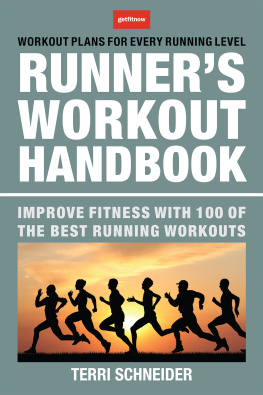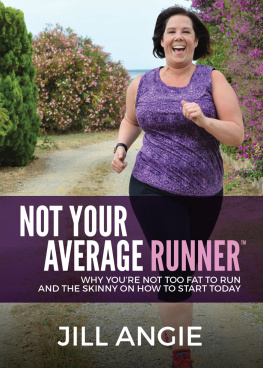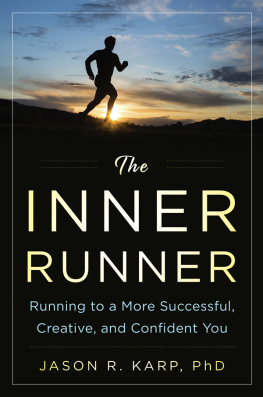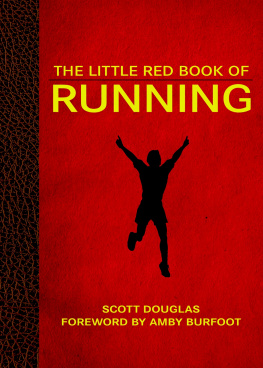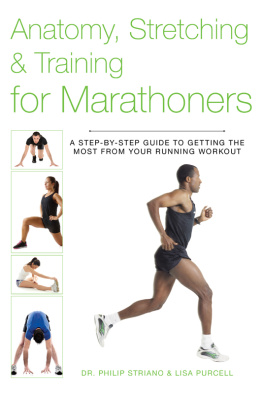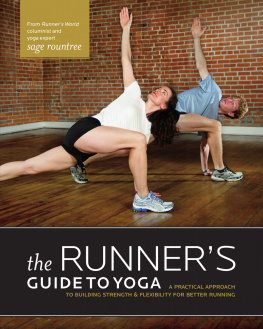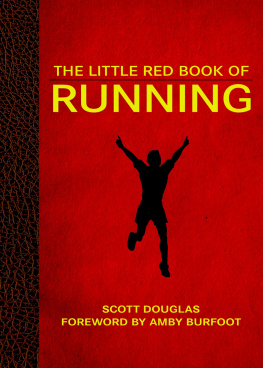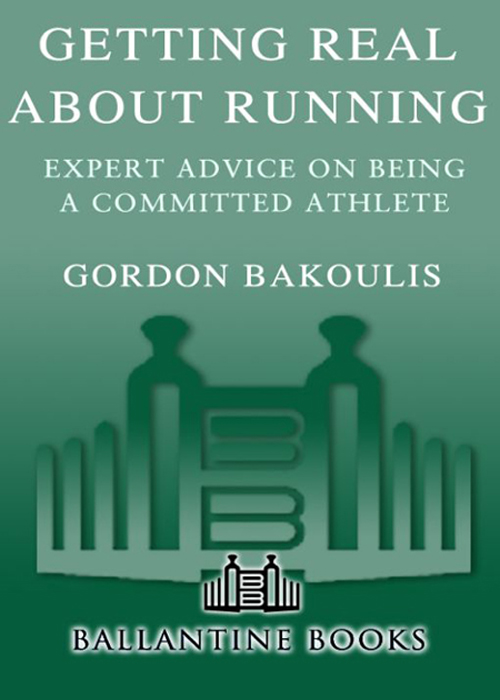
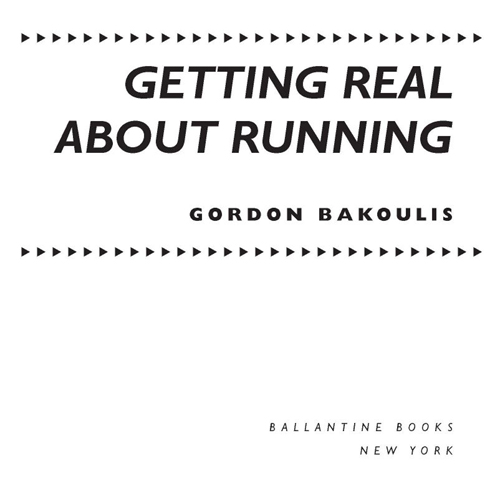
Table of Contents
TO ALAN, OF COURSE
INTRODUCTION
BeingaRunner
Hello, my name is Gordon, and Im a runner. I rarely introduce myself that way, actually. Usually Im a writer for such-and-such or the editor of so-and-so, or Im Alans wife or Joey and Sammys mom. Or Im a daughter or cousin or aunt, or a member of some organization or other, or the upstairs neighbor. Like you, I wear many different hats, answer to many different names, and sometimes feel confused about who, at my core being, I really am.
But I know Im a runner. I can say that with absolute certainty, and I hope to be able to say it for as long as I live. Ive been a runner all my adult life, though I spent many years running before I consistently thought of myself and referred to myself as a runner. Yeah, I run, Id say when people asked. But I didnt want the activity to define who I was. I didnt want the runner part of my identity to be that big a deal.
It wasnt until a bizarre set of circumstances befell me in my early thirties that I embraced my runner identity. Following the 1992 New York City Marathon, I tested positive for a banned substance, a medication called probenecid. I had taken this drug to treat Lyme disease, and neglected to check it against the U.S. Olympic Committees list of substances banned in international competition (a list used by all major races). Probenicid, though not itself a performance-enhancing drug, is prohibited because it can block the excretion of other drugs in the urine, thereby masking their presence. (In my case it simply strengthened the antibiotics I was taking by limiting their excretion.)
My oversight had devastating consequences: I was told I could not compete in any running eventfrom the Olympics to a local fun runfor four years. I fought the ruling through legal channels, and was granted permission to return to competition seven months later. Though the whole experience was one of the worst things that ever happened to me, it had a silver lining. During my ban, I could no longer run in the way that had become most meaningful to methat is, as a world-class competitive athlete. For several months I barely ran at all. But even in my darkest moments, I realized something: I was still a runner. The ban could dictate, temporarily, what I did. But it couldnt tell me who I was. Once that truth came home to me, I raneven though I could not competewith a joy and commitment I had never felt before. I returned to competition and promised myself to never again take my running for granted, nor to deny, to myself or others, that runner is a fundamental part of who I am.
These days, my life is centered on running to a degree I find almost embarrassing. (Doesnt she have any other interests? I imagine people thinking.) I run almost every day, and compete as one of the top masters (40+) runners in the country. Most of my friends are runners. My husband is a runner, and we met through running. I coach runners. This is my third running book. Im the editorial director of New York Road Runners, have been editor-in-chief of Running Times magazine, and have written for half a dozen running publications. As much as I try to pursue other interests and activities, Ive seen all the running movies, read all the running novels, and checked out almost all the running Web sites. I hold out against a complete obsession with running in small ways, such as refusing to incorporate the word run into my e-mail address or sport an I Love Running bumper sticker.
I wanted to write a book that would share with other runners all that makes running the wonderfully enriching center of my life. I envisioned it as a book for people who, like me, call themselves runners. I know youre out there by the hundreds of thousands. I hope it didnt take an experience as traumatic as mine to make you realize the importance of running to who you are. More than that, I hope you dont imagine that when I say runner I mean only serious (read: fast, sleek) competitor. Ive been running, coaching, and writing about running for a long time, and as far as Im concerned, too much is made of the fast runner/slow runner distinction. In the first place, no runner, from Khalid Khannouchi on down, is as fast as he or she wants to be, and we all can learn and do things to improve our running. Second, some of the most serious, committed runners I know will never be considered fast, and some of the fastestdefined as covering ground quicklyhave a surprisingly laid-back approach. I hope runners of all talent and fitness levels will read this book, and learn something from it.
This book is also for people like the runner I used to be, people who run but, for whatever reason, dont include runner as part of their identity. Perhaps running is just one of several sports and fitness activities that compete for your time and energy. Perhaps youve had a taste of running by doing a 5k fun run, a charity race to raise money and awareness for a cause, or a corporate team event. Perhaps you ran in high school or college, have been inactiveor busy with other activitiesfor years, and would like to return to running. Perhaps youve met some new friends who run, or have seen runners in your local park or noticed a flyer promoting a road race, a running club, or running classes. Ive written this book to offer information, inspiration, and guidance to assist you in a running lifestyle that works for you.
Chapter 1 offers insights into the differences between running and being a runner, and helps runners move forward from the now what? stage they may find themselves in after doing their first race or completing a beginner running program. Chapter 2 explains the science behind running, in nonscientific language. Chapter 3 explains training in cycles and offers detailed weekly, monthly, 6-month, and 12-month training programs. Chapter 4 covers gearshoes, clothing, and gizmosthat runners need to maximize their running enjoyment and performance.
Chapters 5 through 7 focus on health: avoiding and dealing with injury and illness (5); maximizing runnings mental health benefits (6); and advice on eating and drinking before, during, and after running (7). Chapter 8 explores the rich and varied world of racingon the roads, track, trails, and elsewherethat awaits runners at all levels. In Chapter 9 youll read about cross-training, supplemental training, and active rest, three areas that will enhance any running program.
Chapters 10 through 13 discuss running as a part of life and throughout the life cycle: balancing running and other life issues and concerns in Chapter 10; womens running in Chapter 11; running for children and youth in Chapter 12; and running after age 50 in Chapter 13. Ive also included a Resources section with contact information for dozens of sources of further information, a Bibliography, pace charts, and mile/kilometer conversion charts.
The pleasure and fulfillment of running are deep-rooted. Like many of lifes most fundamental gifts, the importance of running to a real runner can be hard to articulate. Yes, I run for my health, for fitness, to channel my physical and emotional energy, and as a social outlet. Yet I know, too, that Id be a runner even if it werent good for me, and I werent good at it. Because a runner is who I am.
CHAPTER 1
Youve Started RunningNow What?
When you first began running, you probably found lots of how-to-start advice. Yet despite this plethora of information, research shows that more than half of new exercisers (in all activities) quit by the six-month mark. Why is this so? People start exercise programs with the best intentionswhy do so many fall by the wayside?
Next page

